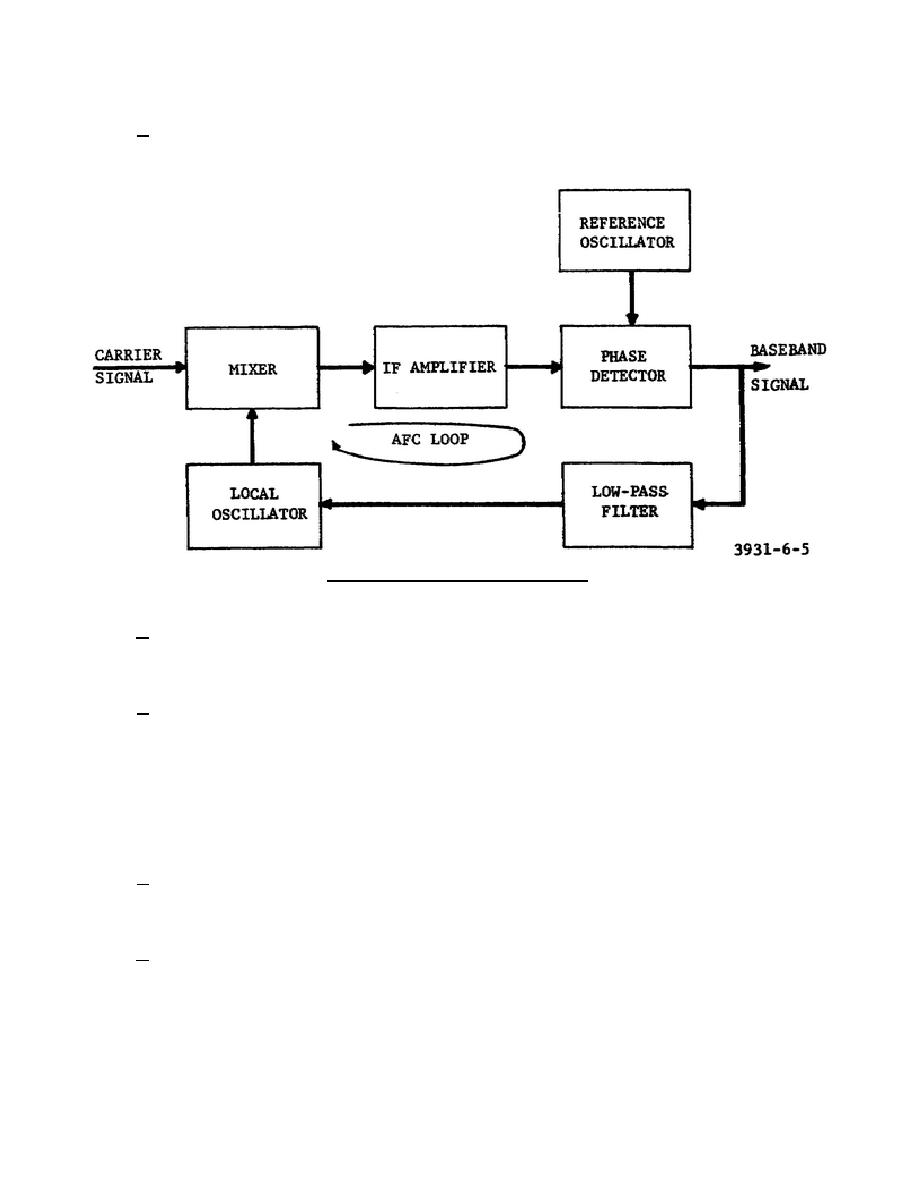
3-27.
PHASE-SENSITIVE AFC
a. Except for the phase detector and the reference oscillator, the phase-sensitive AFC loop shown in
figure 114 is essentially the same as the frequency-sensitive AFC loop shown in figure 113.
Figure 114. Phase-sensitive AFC loop.
b. The phase detector senses the changes in the phase of the IF with reference to the output signal's
phase from the reference oscillator. These phase changes cause an average dc output from the phase detector.
The reference oscillator is a highly stable oscillator that operates at the same frequency as the IF.
c. An increase in the IF is sensed as an advance in the phase of the IF. The phase detector will produce
an average dc output that is proportional to the amount of the phase change. This output voltage is applied to the
local oscillator as in the frequency-sensitive AFC loop. A decrease in the IF is sensed as a lag in phase by the
phase detector which will produce an average output of opposite polarity from that generated by an advance in
phase. When there is no phase difference, the output is zero. The phase-sensitive AFC circuit is similar to a
phase-lock-loop demodulator.
3-28.
AUTOMATIC GAIN CONTROL
a. Because of fluctuations in the propagation characteristics of free space and the earth's atmosphere, the
power level of the received signals will not be constant. These fluctuations will cause undesired amplitude
variations in the demodulated signal.
b. The effects of these variations may be minimized by reducing the gain of the IF amplifiers when the
received signal is at a relatively high amplitude,
344 L3
122



 Previous Page
Previous Page
